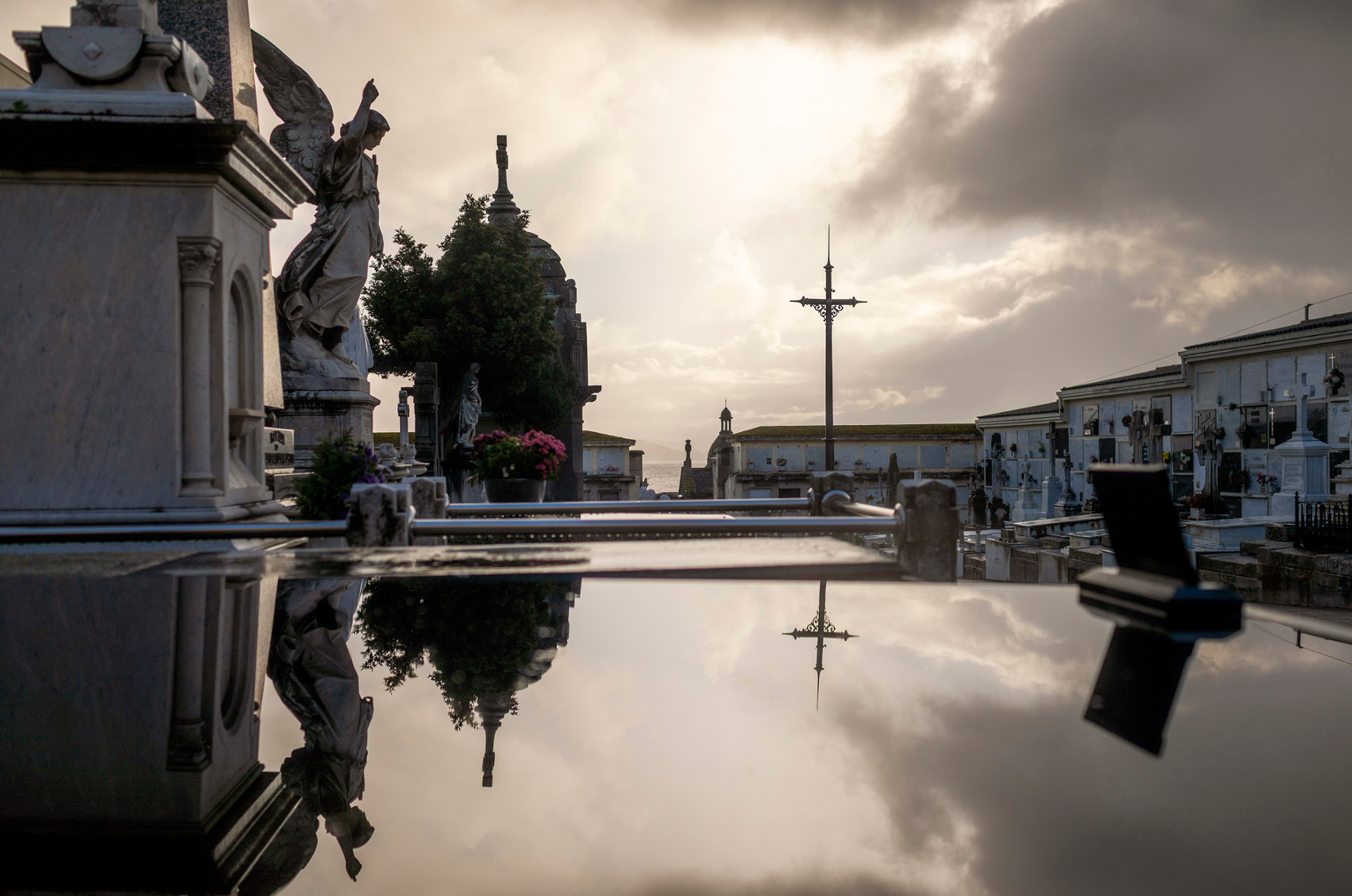- Home
- Place
San Amaro Cemetery

Address:
Telephone:
Fax:
+(34) 981 189 825
Services:
Accessible for people with disabilities.
Horario:
7 days a week from 9.00 to 18.00 (including holidays)
History of the San Amaro Cemetery
The San Amaro Cemetery was inaugurated in 1813 after a law was put in place the previous year banning burials in churches and churchyards.
This historic cemetery beside the sea is considered one of the most important in Galicia, both for the large number of people buried there - more than two hundred - and for the notoriety of those who rest there.
The cemetery is divided into three areas: the religious, the civil and the British, the latter of which is private and closed to the public.
It is worth mentioning two collective monuments: the Monument to the Martyrs of Freedom and the Broken Column of Liberty in memory of the general strike of 1901.
The Monument to the Martyrs of Freedom stands on the place where the German airmen of the Second World War once rested; they were transferred to the Yuste Cemetery in Cáceres. The remains of Maghrebi soldiers who served with the rebels in 1936, are currently resting under this monument.
The Column, which was erected in memory of the general strike of 1901, according to the tombstone, was funded by public donations driven by the initiative of the workers' societies, for the victims of the events of 30 and 31 May 1901, following what is considered to be the first great general strike in the history of the Galician workers' movement, with a complete strike in all sectors.
In the fourth section of the cemetery, there is a monument dedicated to the victims of the plane crash on 13 August 1973 in Montrove (Oleiros).
San Amaro and Picasso
Pablo's younger sister, Conchita, died of diphtheria on 10 January 1895. Two days later, she was buried in the general cemetery (today San Amaro), in the nursery area of the first section, from where her remains were probably removed some years later.
Picasso's patron Pérez Costales, his teachers Brocos and Navarro and the painter Pardo Reguera were also buried in this cemetery. The tombs of the last three can still be visited.
The European Cemeteries Route
In 2012, on the occasion of San Amaro's 200th anniversary, the cemetery joined the Association of Significant Cemeteries in Europe (ASCE), a European network of organisations dedicated to the preservation and promotion of cemeteries as an important part of cultural heritage. This was the first step towards the inclusion of the cemetery in 2013 in the European Cemeteries Route (identification plaque at the main entrance of the cemetery), which seeks to enhance the value of European funerary heritage and contribute to European territorial cohesion.
Follow us on
- Facebook Turismo Coruña |
- Twitter Turismo Coruña |
- Instagram Turismo Coruña |
- Whatsapp Turismo Coruña |
- Youtube Turismo Coruña |
- Linkedin Turismo Coruña |
- Facebook Torre de Hércules |
- Twitter Torre de Hércules |
- Instagram Torre de Hércules





